Address
Australia, Singapore, and USA
Address
Australia, Singapore, and USA

Discover the top 12 remote collaboration tools for international teams. Our 2025 guide covers features, pricing, and global strategy integration.
In the modern workplace, effective teamwork transcends physical location. Choosing the right remote collaboration tools is no longer a luxury but a fundamental requirement for productivity and seamless project execution, especially for international teams. This guide is designed to cut through the noise and provide a comprehensive, practical comparison of the best platforms available today. We move beyond generic feature lists to offer a deep dive into each tool's specific strengths, ideal use cases, and how they support a global workforce.
Whether you're a freelancer managing large media assets, a small business needing secure file sharing, or part of a distributed team coordinating complex projects across different regions, this resource will help you make an informed decision. We will analyze everything from project management hubs like Asana and ClickUp to communication platforms like Slack and Zoom, and specialized solutions for secure file transfer like Sky Drive Folder.
Each entry includes detailed analysis, screenshots, and direct links, enabling you to compare options efficiently. We'll also touch upon key considerations for international reach, such as implementing a geo-targeted content strategy and optimizing for multilingual collaboration. Our goal is to equip you with the insights needed to select a toolset that not only facilitates remote work but actively enhances your team’s global collaborative power.
Sky Drive Folder solidifies its position as a premier choice among remote collaboration tools by offering a highly secure, scalable, and user-centric file management ecosystem. It excels not just as a cloud storage repository but as a comprehensive platform for international teams that demand robust security and seamless file distribution. The platform is engineered to handle substantial data loads and diverse content types, making it ideal for creative agencies, engineering firms, and any distributed team managing large project assets across borders.
Its intuitive interface streamlines the process of uploading, organizing, and sharing critical documents. For teams operating across different regions, Sky Drive Folder's architecture supports a localized content strategy, ensuring that access is swift and reliable regardless of geography. This focus on performance, security, and technical SEO for international reach makes it a standout solution for professional collaboration.
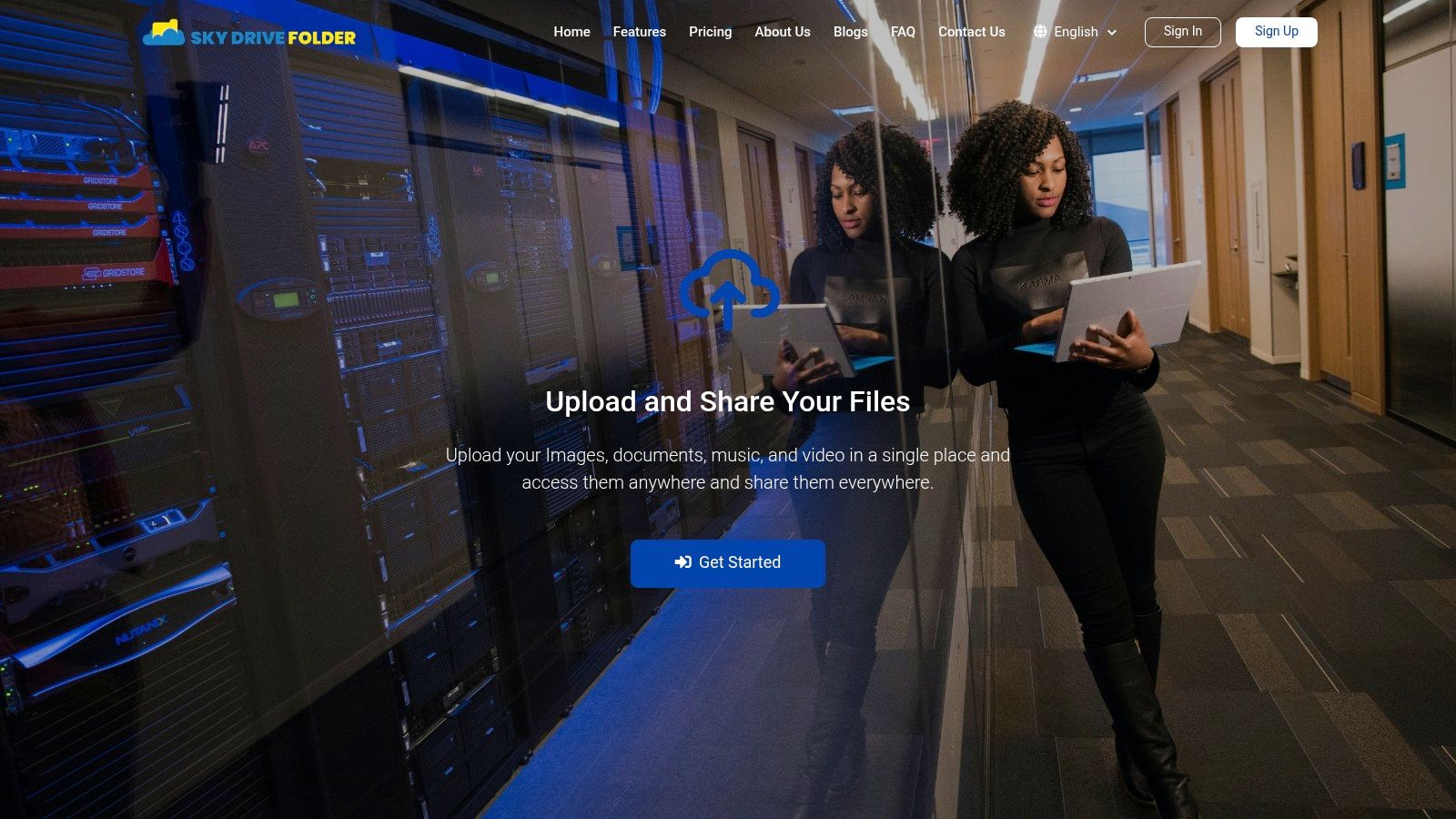
Sky Drive Folder's true power lies in its advanced security and sharing capabilities, which are essential for effective remote work and building trust in target regions. The platform moves beyond basic storage with features that give teams granular control over their intellectual property.
Sky Drive Folder offers flexible plans to suit different needs, from individual freelancers to large organizations.
All plans come with 24/7 customer support and a full money-back guarantee, making it a risk-free investment in your team's collaborative toolkit. For teams looking to optimize their file-sharing workflows, explore their resources to learn more about implementing secure team file sharing.
Miro is an online, collaborative whiteboard platform that empowers distributed teams to brainstorm, plan, and manage projects visually. It’s a standout among remote collaboration tools for its infinite canvas, which gives international teams an unrestricted digital space for mapping out complex ideas, user story maps, or strategic planning sessions. Unlike simpler tools, Miro’s strength is in turning abstract concepts into actionable plans in a shared environment.
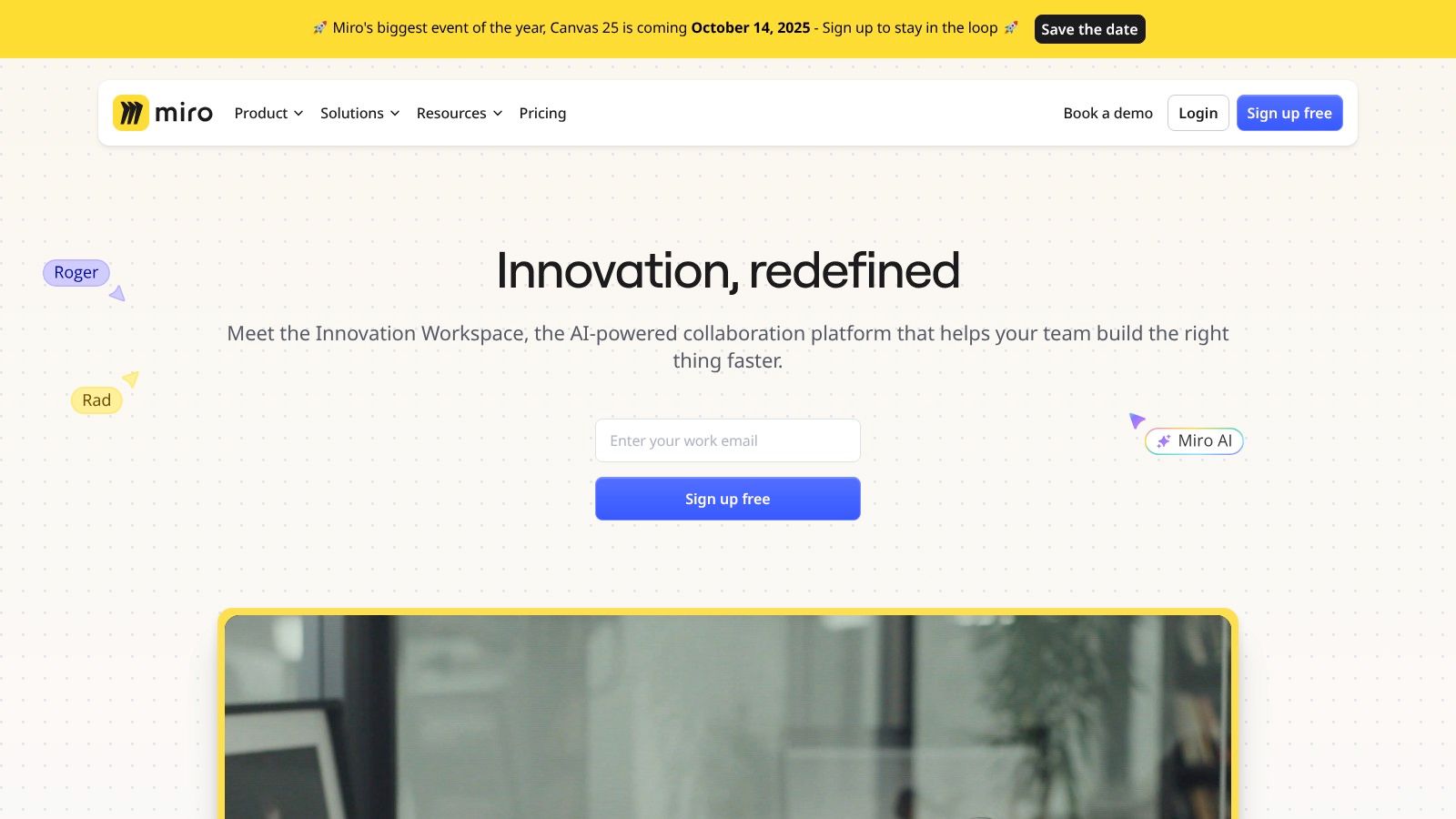
This platform excels at both real-time and asynchronous work, making it perfect for teams across different time zones. The ability to create localized content on separate boards allows for geo-targeted project planning, ensuring strategies align with specific regional needs. While its extensive features can feel overwhelming initially, its user-friendly interface and vast template library quickly get new users up to speed.
Website: https://miro.com
Slack has fundamentally changed how many businesses communicate, positioning itself as a central hub for team conversations. It excels at replacing lengthy email chains with organized, searchable channels dedicated to specific projects, teams, or topics. This structure makes it one of the most effective remote collaboration tools for keeping conversations focused and transparent, allowing team members to quickly catch up on progress without sifting through cluttered inboxes.
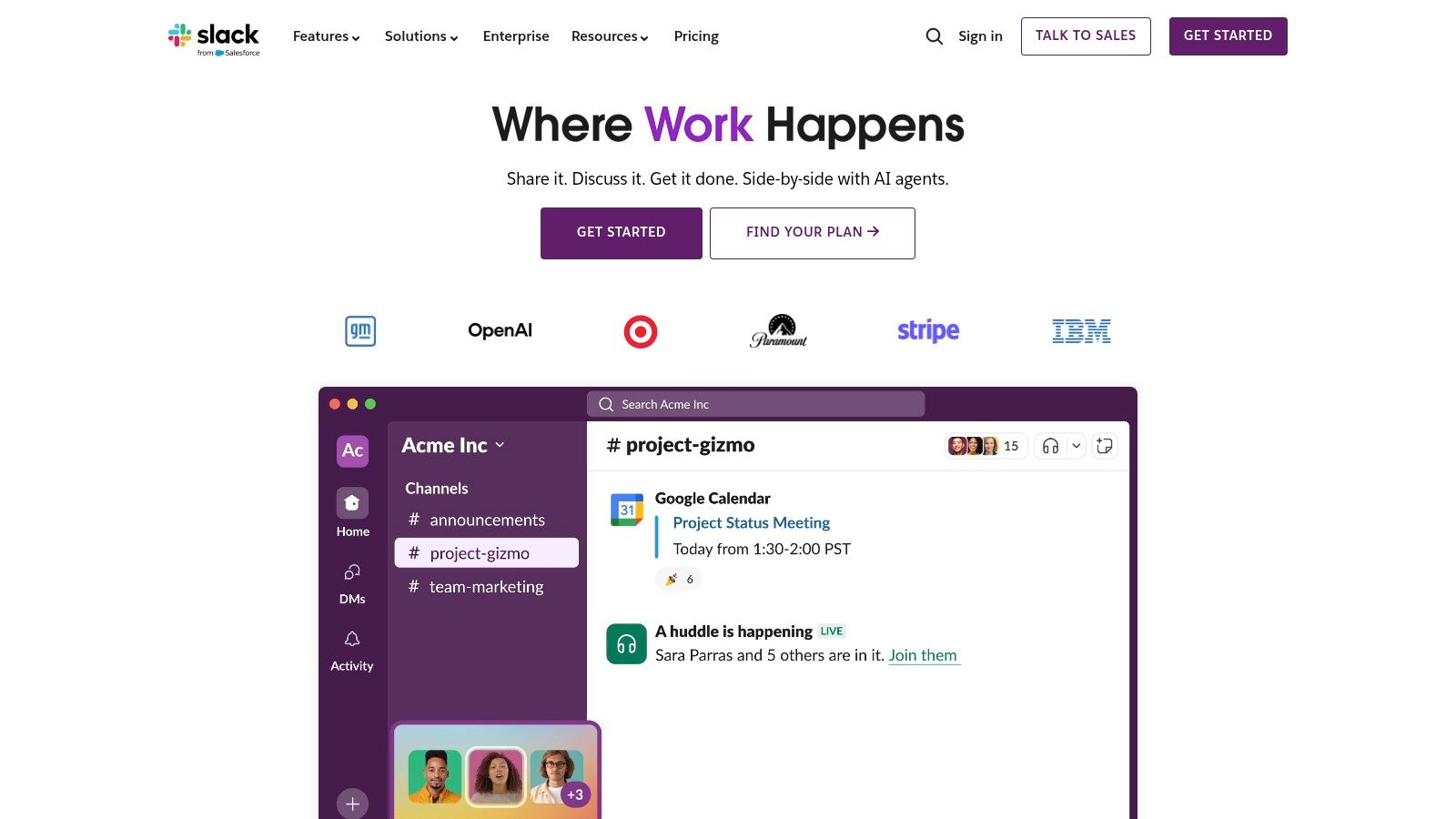
The platform is designed for both immediate, real-time chat and asynchronous updates, a critical feature for global teams operating across different time zones. Its strength lies in its extensive integration capabilities, allowing it to pull in notifications and data from hundreds of other apps. While Slack is powerful for communication, teams often require a more robust solution for handling large files. For those situations, it's important to understand the principles of secure file sharing. The platform’s ability to create multilingual and localized channels can also support geo-targeted marketing efforts, ensuring region-specific strategies are discussed by the correct teams.
Website: https://slack.com
Zoom has become nearly synonymous with video conferencing, solidifying its place as a cornerstone among remote collaboration tools for its reliable face-to-face communication. It enables distributed teams to connect seamlessly through high-quality video for everything from quick one-on-one check-ins to large-scale webinars and company-wide presentations. Its strength lies in its simplicity and accessibility, making it incredibly easy for anyone to join or host a meeting with minimal technical friction.
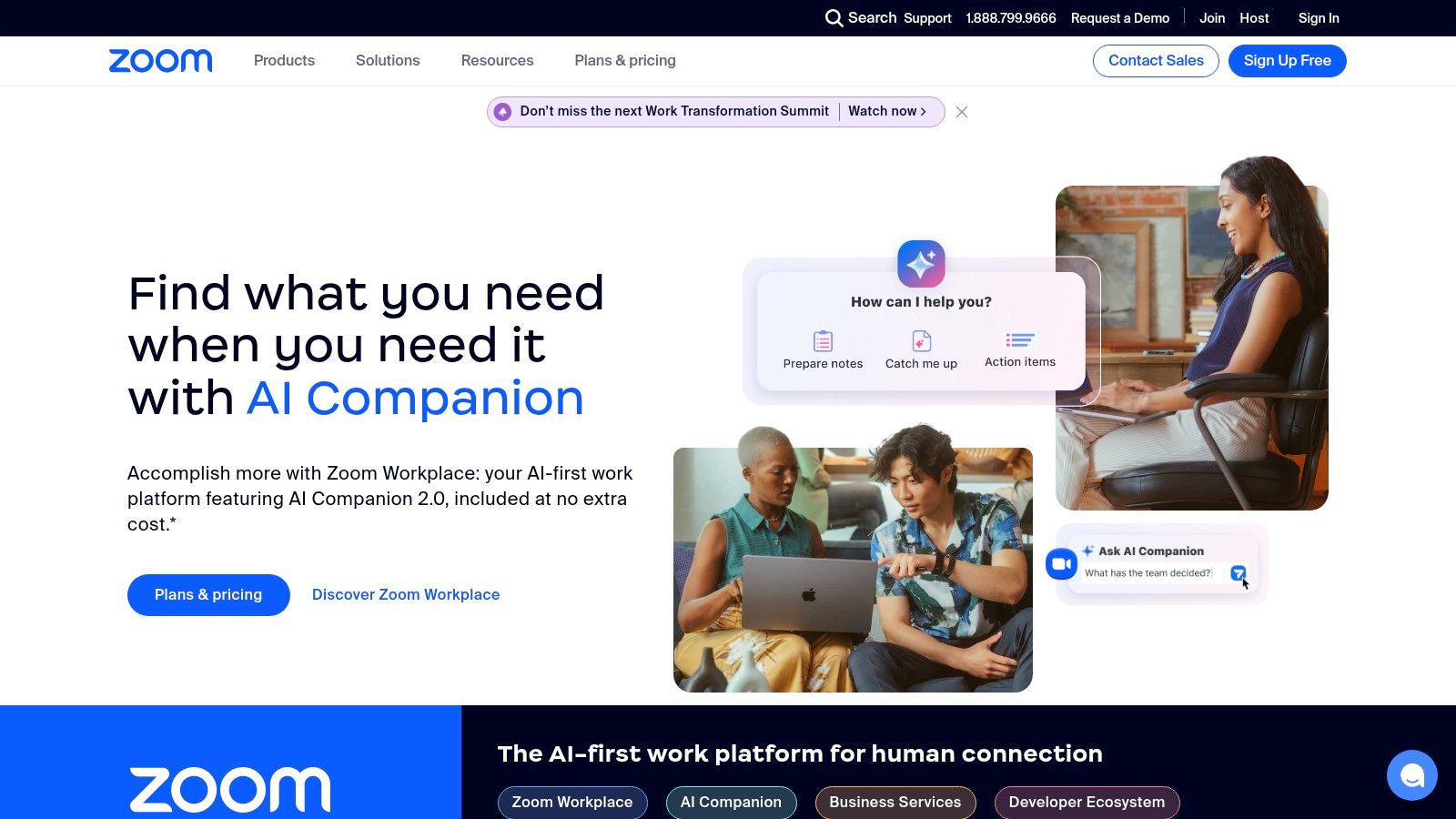
This platform excels at recreating the in-person meeting experience with features like breakout rooms for smaller group discussions and robust screen-sharing capabilities. For global teams, Zoom’s dependable performance supports multilingual communication and geo-targeted presentations, ensuring clear interaction across different regions. While it primarily focuses on synchronous communication, its recording and transcription features make it a valuable tool for asynchronous review and creating localized content.
Website: https://zoom.us
Microsoft Teams serves as an all-in-one hub for communication and collaboration, integrating chat, video meetings, and document sharing into a unified application. It stands out among remote collaboration tools for its deep, native integration with the Microsoft 365 ecosystem. This allows teams to co-author Word documents, manipulate Excel spreadsheets, and present PowerPoint slides in real time directly within the platform, eliminating the friction of app-switching.
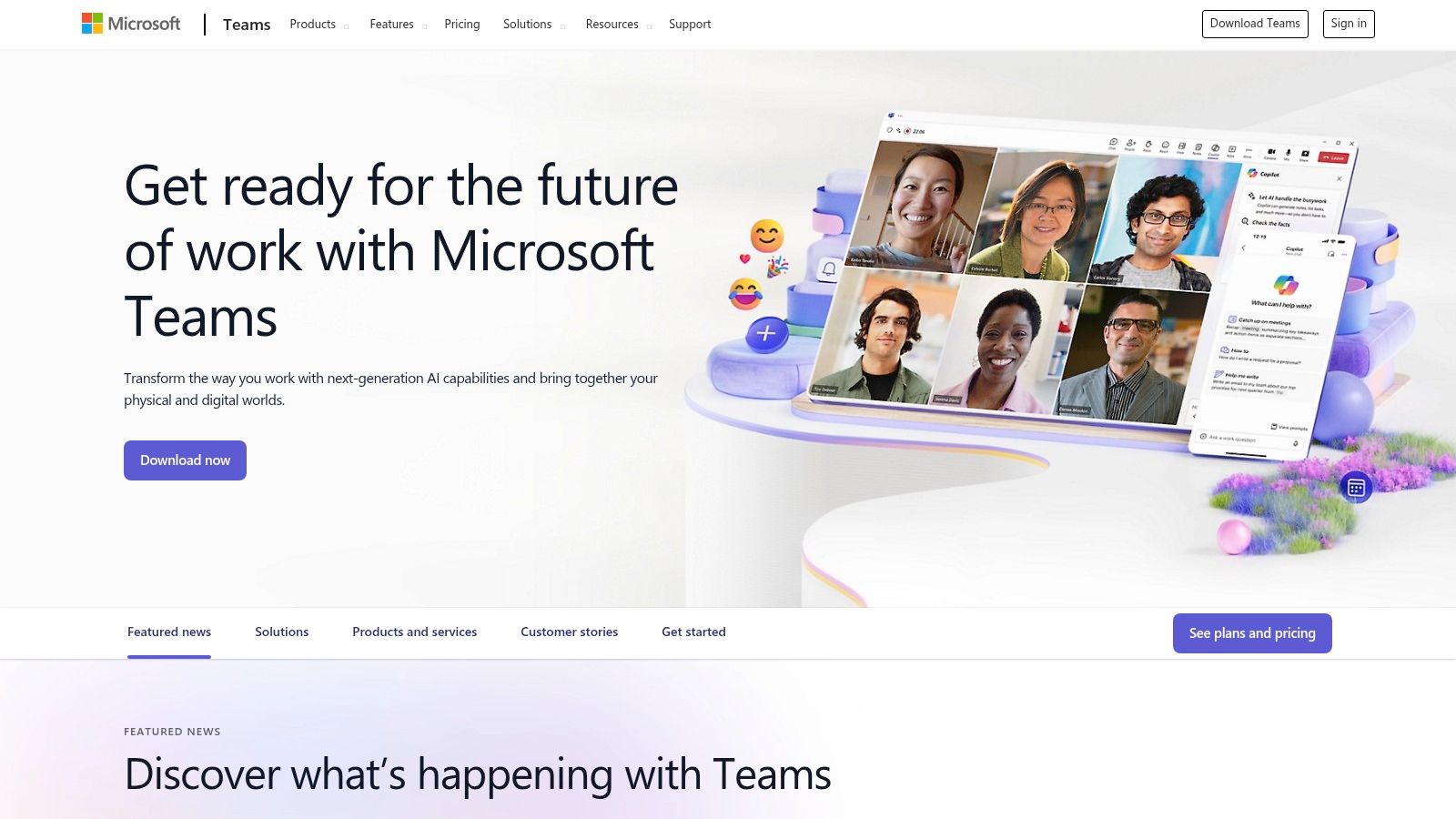
The platform is designed for both synchronous and asynchronous work, with organized channels that keep project conversations and files together. This structure is particularly effective for international teams, as it supports a multilingual interface and allows for geo-targeted teams or channels focused on specific regions. While its feature-rich environment can present a learning curve for newcomers, its powerful capabilities and robust security make it a cornerstone for businesses already invested in Microsoft's software suite.
Website: https://www.microsoft.com/en-us/microsoft-teams
Asana is a comprehensive project management platform that excels at helping teams organize, track, and manage their work from start to finish. It stands out among remote collaboration tools by focusing on clarity and accountability. Asana lets you break down large projects into manageable tasks, assign them to team members with specific deadlines, and visualize progress through multiple views like lists, boards, and timelines.

This tool is designed to eliminate "work about work," centralizing communication and files directly within tasks to keep everyone aligned. For international teams, its strength lies in creating a single source of truth that transcends geographical boundaries, allowing managers to implement geo-targeted project timelines for different regions. While its extensive customization can be overwhelming for new users, the highly intuitive interface and robust integrations make it a powerhouse for streamlining global operations.
Website: https://asana.com
Trello is a highly visual and intuitive project management tool that organizes work into boards, lists, and cards. Its straightforward, Kanban-style layout makes it one of the most accessible remote collaboration tools for teams that need to track workflows and project progress without a steep learning curve. The platform's strength lies in its simplicity, allowing teams to quickly visualize task stages from "To-Do" to "Done."
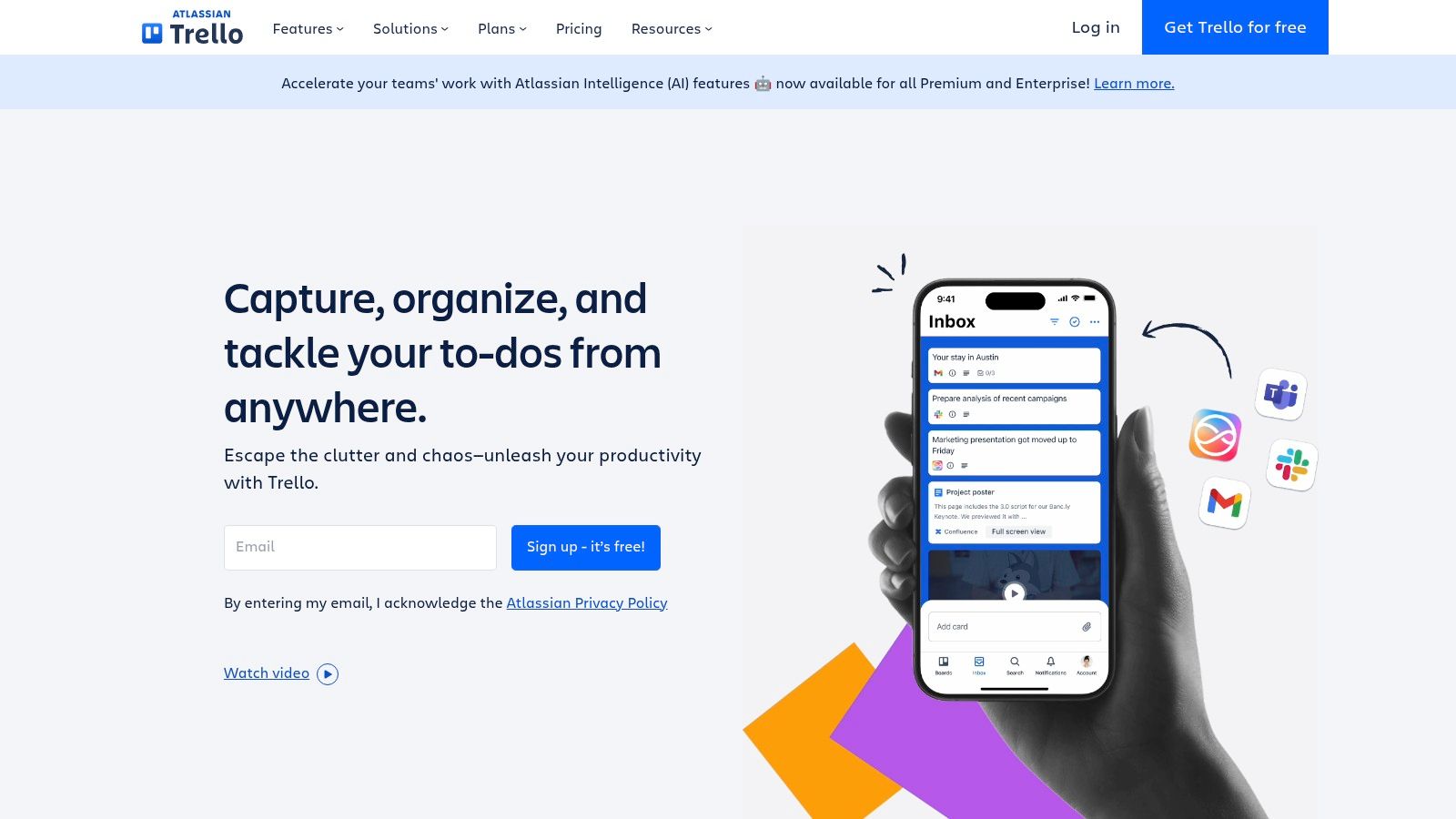
This tool is exceptionally flexible, catering to both simple task lists and more complex agile workflows. Its scalability allows teams in different regions to create localized boards tailored to specific market strategies, supporting geo-targeted campaigns by tracking progress on a per-region basis. While it may lack the advanced reporting and dependency management of more complex systems, its user-friendliness and powerful free tier make it a go-to for many remote teams.
Website: https://trello.com
Google Drive stands as a cornerstone among remote collaboration tools, offering a seamless blend of cloud storage and a real-time productivity suite. Its core strength lies in its deep integration within the Google ecosystem, allowing teams to create, share, and co-edit documents, spreadsheets, and presentations directly in the browser. This eliminates version control issues and creates a single source of truth for project files, making it incredibly accessible for international teams.
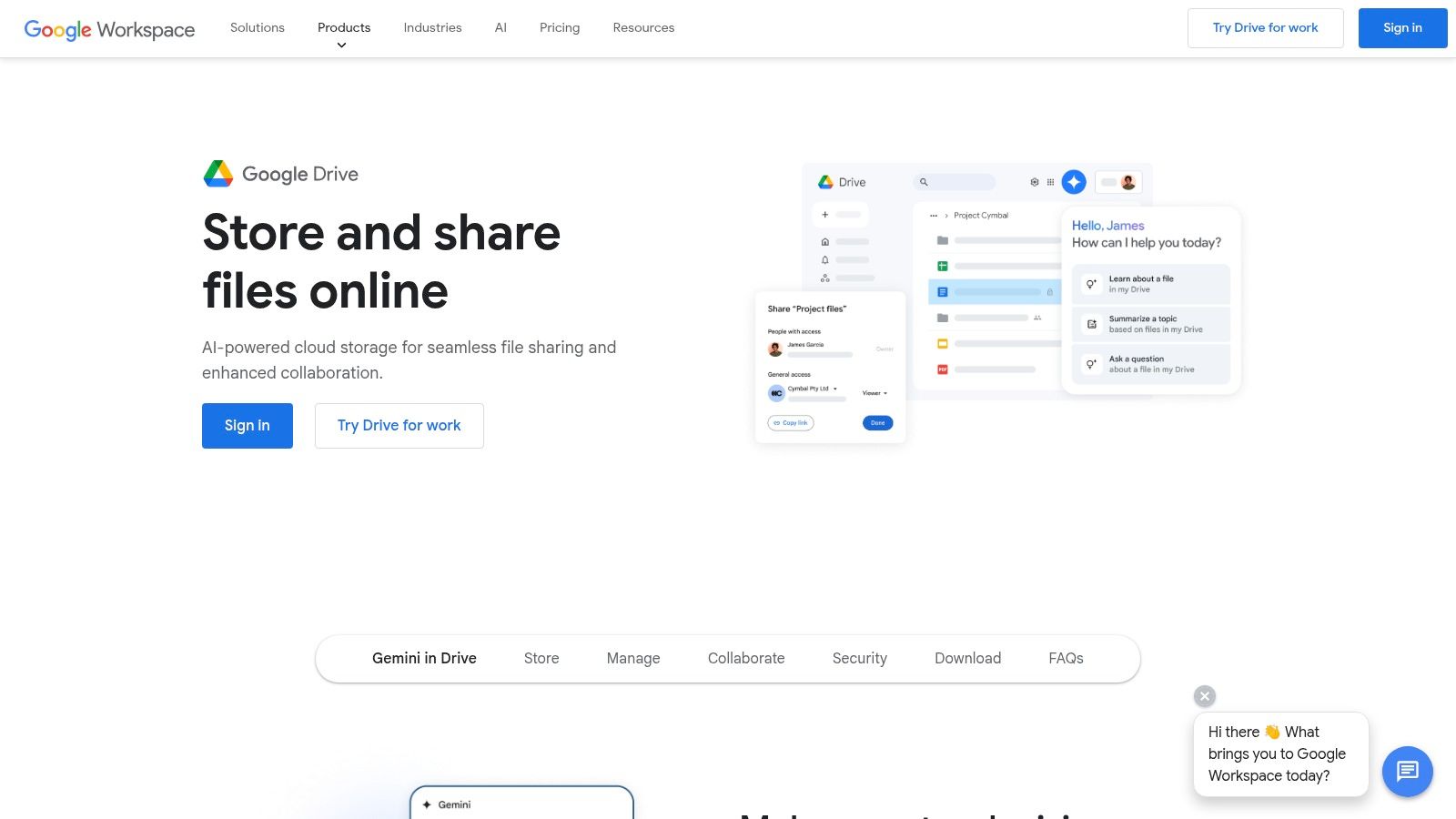
The platform’s accessibility and familiar interface make it a go-to for rapid adoption with minimal training. Its powerful search function helps locate files quickly, even in a cluttered folder structure. For organizations operating globally, Drive’s ability to set language preferences on a per-user basis supports multilingual teams, ensuring everyone can work in their native language to create localized content. While its offline functionality has improved, it still relies heavily on a stable internet connection for the best collaborative experience. You can learn more about cloud storage for small business to see how it compares.
Website: https://www.google.com/drive/
TeamViewer is a specialized remote collaboration tool focused on remote access, control, and support. It allows IT professionals and support teams to securely connect to and manage computers and mobile devices from anywhere in the world. Its core strength lies in providing a stable, high-performance connection for technical troubleshooting, software installation, and system maintenance, making it indispensable for distributed IT departments supporting a global workforce.
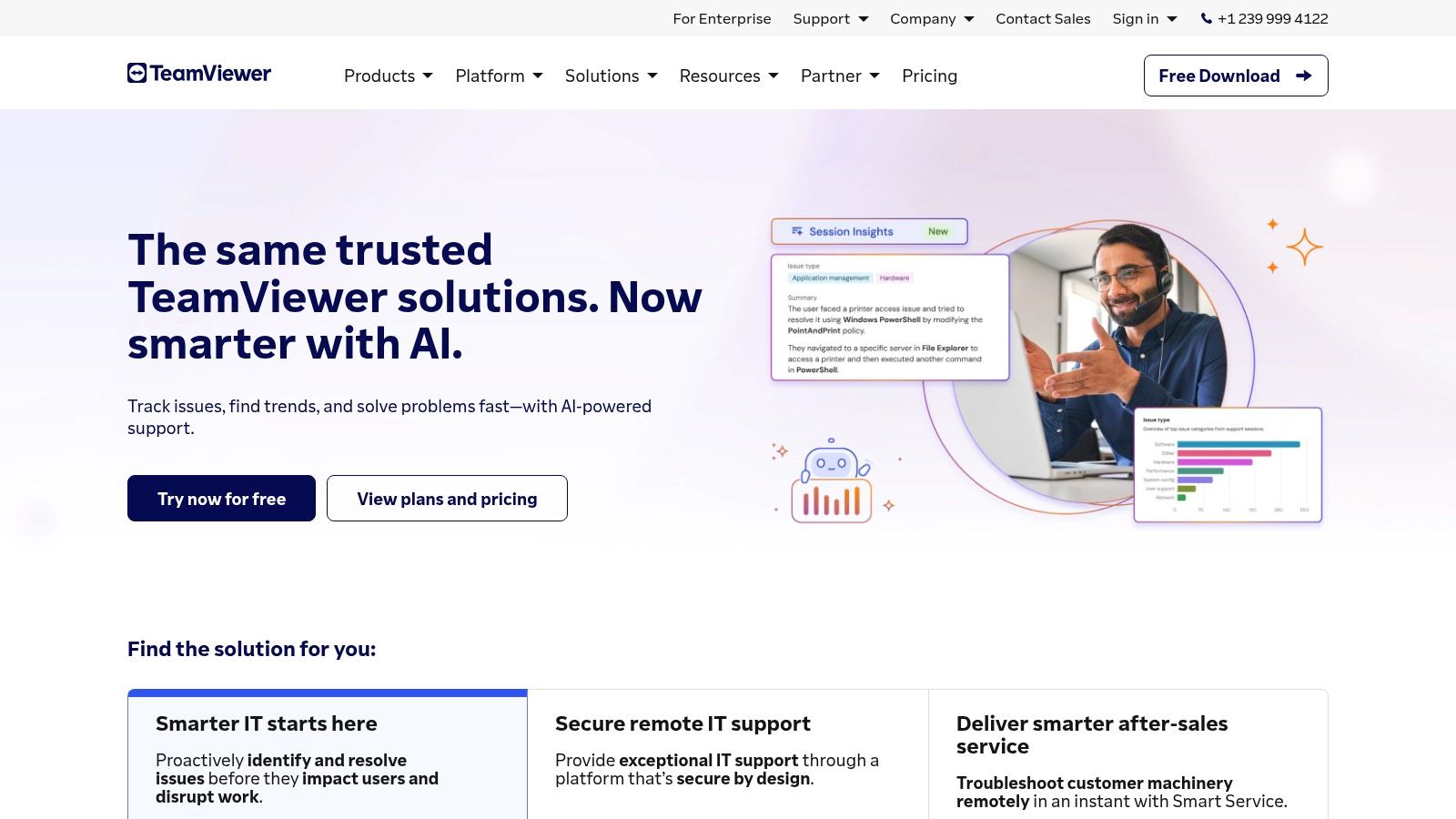
While not a project management platform, its role in remote work is critical for ensuring operational continuity. The cross-platform compatibility means support can be provided across Windows, macOS, Linux, and mobile devices seamlessly. TeamViewer also supports remote assistance in multiple languages, allowing global teams to manage regional IT infrastructure effectively. This platform is a powerful solution for direct, hands-on technical assistance, a unique and vital aspect of global remote collaboration.
Website: https://www.teamviewer.com
ClickUp markets itself as the "one app to replace them all," and for many teams, it lives up to that promise. This all-in-one productivity platform consolidates tasks, documents, chat, goals, and more into a single, highly customizable workspace. Its strength lies in its incredible flexibility, allowing teams to build their ideal workflow from scratch rather than forcing them into a rigid structure. As a result, it’s one of the most adaptable remote collaboration tools available.
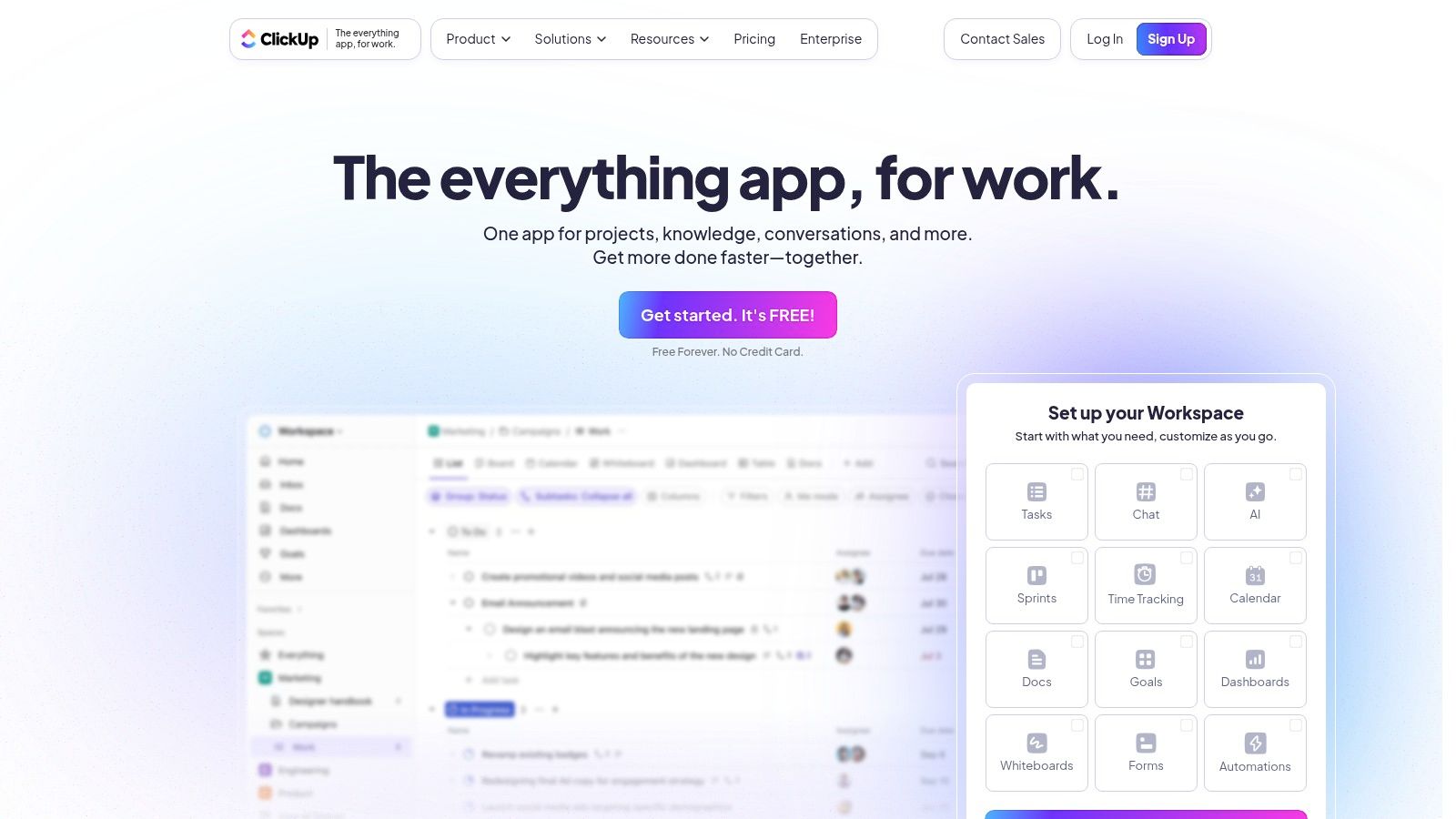
This platform supports diverse work styles through its multiple project views, including lists, boards, calendars, and Gantt charts. For global teams, the ability to set custom fields and statuses allows for the creation of geo-targeted workflows, ensuring project stages align with regional operations or marketing campaigns. While its sheer number of features can present a steep learning curve, its powerful free plan makes it accessible for any team to start organizing their work without an initial investment.
Website: https://clickup.com
Basecamp is a real-time communication and project management tool that centralizes projects, documents, and tasks into a single, organized space. It stands out among remote collaboration tools for its simplicity and all-in-one approach, which combines to-do lists, message boards, scheduling, and document storage. This eliminates the need for multiple disparate apps, creating one source of truth for every project.
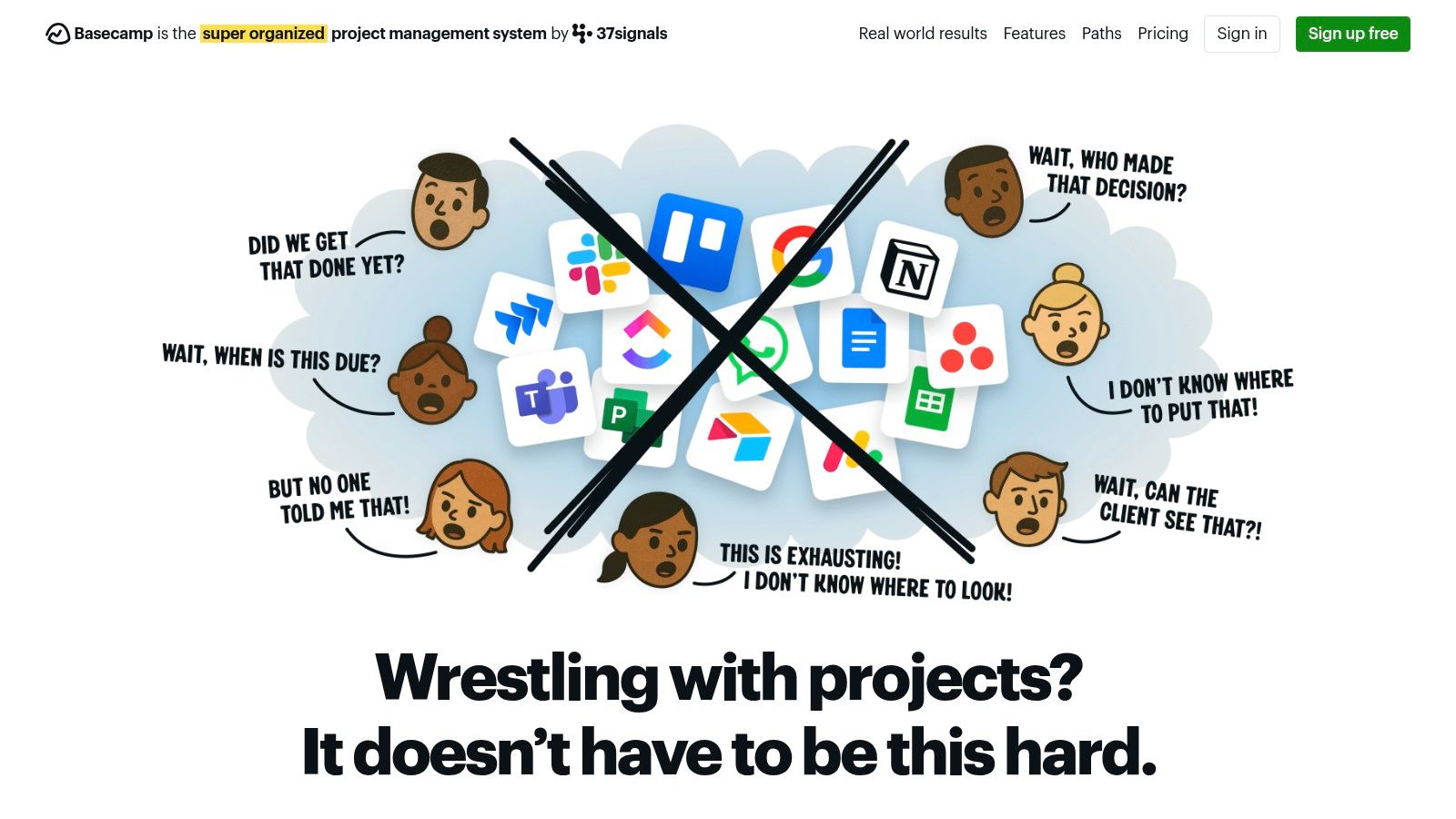
The platform is designed to keep remote teams organized and connected without overwhelming them. Its unique, flat-rate pricing is a major differentiator, offering unlimited projects and users for one predictable cost. While the interface may feel more traditional compared to newer tools, its intuitive design ensures that teams can get started with minimal training. Its structure allows for localized project spaces, making it easier to manage geo-targeted campaigns and teams across different regions.
Website: https://basecamp.com
Loom is a video messaging tool that fundamentally changes asynchronous communication for remote teams. It lets users simultaneously record their screen, camera, and microphone, creating instantly shareable videos. This makes it one of the most effective remote collaboration tools for providing detailed feedback, creating tutorials, or delivering presentations without scheduling a live meeting, overcoming the challenges of coordinating across different time zones.
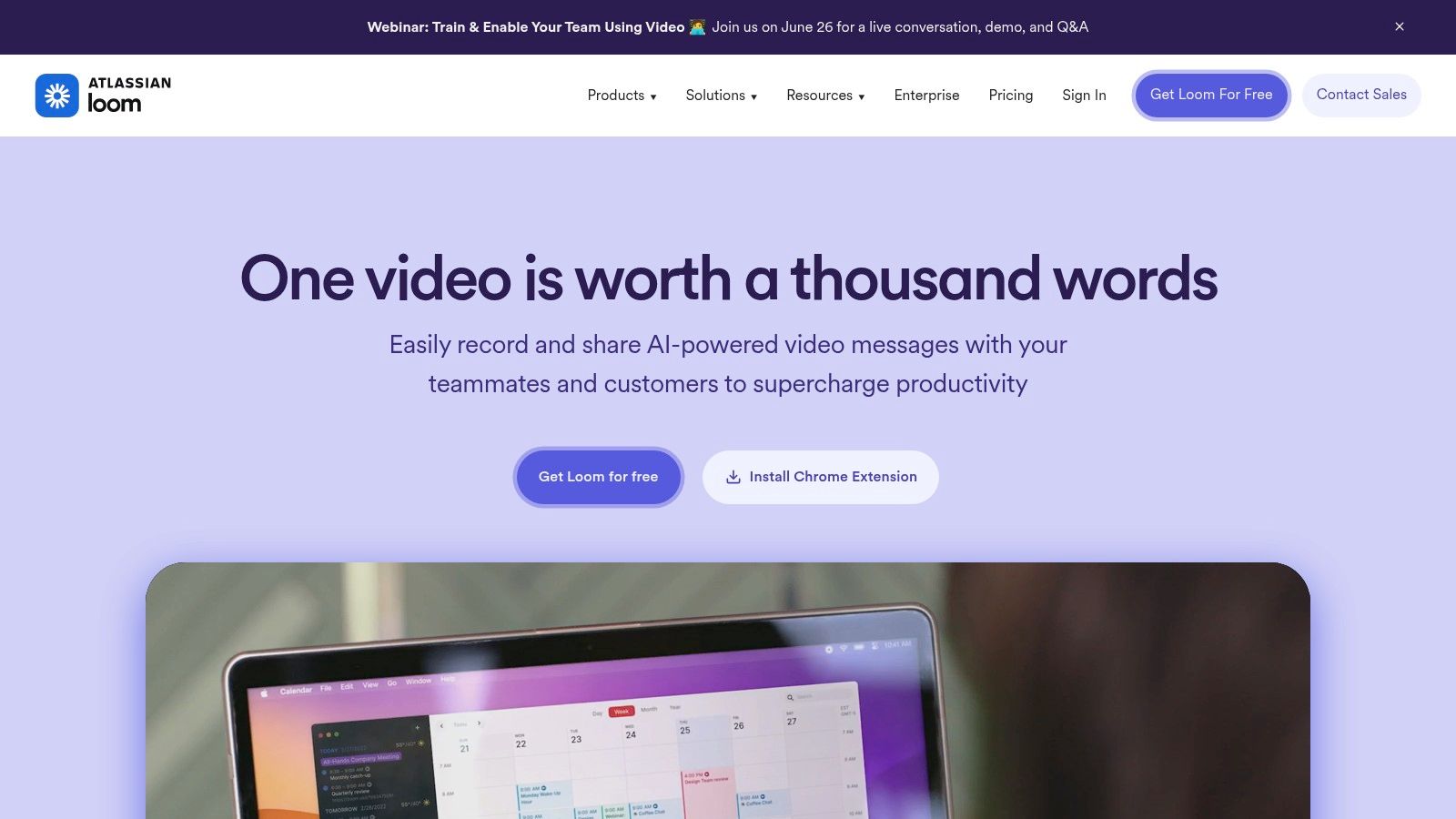
This platform excels at adding a personal touch to digital communication, reducing the ambiguity that often comes with text-only updates. For international teams, creating localized video content for training or regional updates is simple and powerful. By analyzing viewer engagement metrics, teams can gauge how well their message is received across different regions and optimize their communication strategies for better global conversions. Its simplicity and powerful integrations make it a must-have for modern distributed teams.
Website: https://www.loom.com
| Product | Core Features / Capacity | User Experience / Quality ★★★★☆ | Value & Pricing 💰 | Target Audience 👥 | Unique Selling Points ✨ |
|---|---|---|---|---|---|
| 🏆 Sky Drive Folder | Up to 5TB storage, 20GB+ file size, batch uploads | Intuitive UI, 24/7 support, money-back guarantee | Flexible plans from $2.49/mo 💰 | Individuals, SMBs, global teams | AES-256 + E2E encryption, geo-targeted infra |
| Miro | Infinite canvas, real-time collaboration | User-friendly, templates available | Free limited plan, paid tiers | Remote teams, creative projects | Collaborative whiteboards, localized planning |
| Slack | Channels, DM, file sharing | Highly customizable, user-friendly | Free limited features | Teams, businesses | Multilingual channels, extensive integrations |
| Zoom | Video conferencing, screen sharing | Reliable, easy to use | Free tier with 40 min limit | Remote workers, businesses | Live translation, HD video, webinar support |
| Microsoft Teams | Chat, video meetings, document co-authoring | Robust, but complex | Included with Microsoft 365 plans | Enterprises, MS365 users | Deep MS Office integration, multilingual UI |
| Asana | Task assignments, timelines, workload mgmt. | Customizable, user-friendly | Free & paid plans | Teams of all sizes | Geo-targeted timelines, custom fields |
| Trello | Boards, lists, cards for tasks | Intuitive, flexible | Free substantial features | Small teams, Kanban/Scrum users | Visual task tracking, localized boards |
| Google Drive | Cloud storage, real-time docs collaboration | Easy, accessible | Free tier, paid storage upgrades | Everyone | Multilingual co-editing, shared team drives |
| TeamViewer | Remote device control, file transfer | Easy setup, cross-platform | Free non-commercial, high commercial cost | IT pros, remote support | Secure global remote access, multilingual help |
| ClickUp | Customizable workspace, task mgmt | Feature-rich, learning curve | Free tier available | Teams seeking all-in-one tool | Regional goal tracking, multiple project views |
| Basecamp | To-dos, message boards, schedules | Simple, intuitive | Flat pricing, unlimited users | Small to mid-sized teams | All-in-one PM, geo-targeted project spaces |
| Loom | Video messaging, screen recording | Easy video creation & sharing | Free limited, paid tiers | Educators, remote teams | Localized video creation, engagement analytics |
Navigating the vast landscape of remote collaboration tools can feel overwhelming, but the journey to finding the perfect tech stack is a crucial investment in your global team's productivity and cohesion. As we've explored, from the dynamic whiteboarding of Miro to the structured project management of Asana and the all-encompassing communication hub of Microsoft Teams, there is no single "best" tool. Instead, the ideal solution is a carefully curated ecosystem of platforms that address your unique operational needs, especially for international keyword strategies and market penetration.
The key takeaway is that true remote success isn't about adopting every popular application. It's about strategic integration. Your choice should be guided by a clear understanding of your team's primary functions. Are you a creative agency that thrives on visual brainstorming? A combination of Miro for ideation and a secure asset repository like Sky Drive Folder for deliverables might be your answer. Are you a globally distributed enterprise focused on structured, multi-stage projects? A powerful project management tool like ClickUp, integrated with a reliable communication platform like Slack or Teams, will provide the necessary framework for global success.
Before committing to a subscription, your team should perform a thorough needs analysis. Consider the following critical factors to guide your decision-making process:
Simply purchasing a license is not enough. Successful implementation requires a deliberate rollout strategy. Start with a pilot group to test the tools in a real-world setting, gather feedback, and create best-practice documentation. Provide comprehensive, multilingual training to ensure every team member understands not just how to use the tool, but why it's being used and how it fits into the broader collaborative strategy. This investment drives conversion optimization per region.
Ultimately, the most effective remote collaboration tools are the ones that fade into the background, allowing your team to focus on what truly matters: doing great work together, from anywhere in the world. By taking a thoughtful, strategic approach to selection and implementation, you can build a digital workplace that is not just functional, but genuinely empowering for every member of your global team.
Ready to secure the foundation of your collaborative toolkit? While complex platforms manage your tasks and conversations, Sky Drive Folder provides the fast, simple, and highly secure file-sharing solution that underpins it all. Ensure your team’s most important assets are protected and easily accessible with our intuitive platform. Start sharing securely with Sky Drive Folder today!